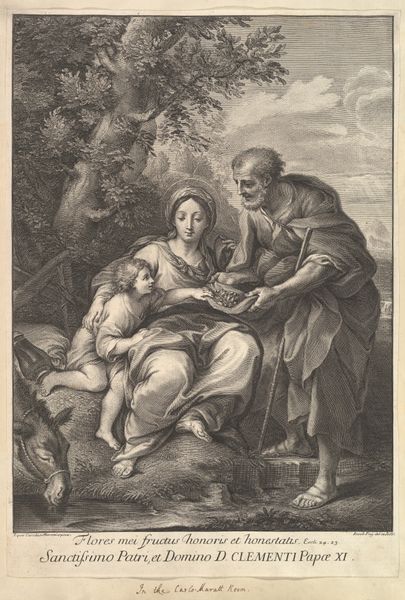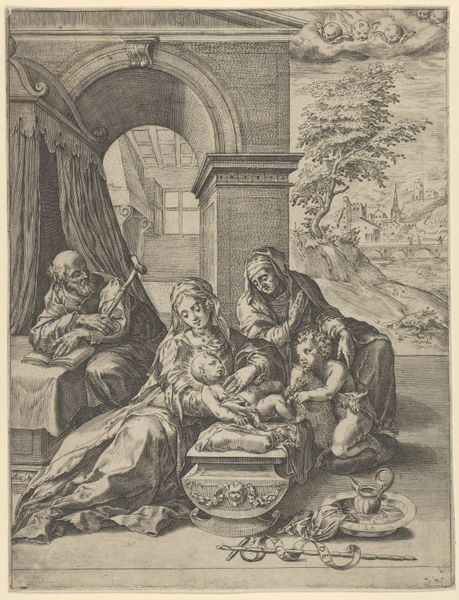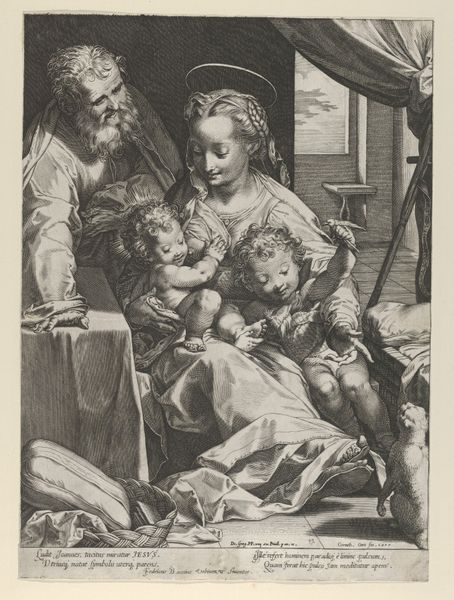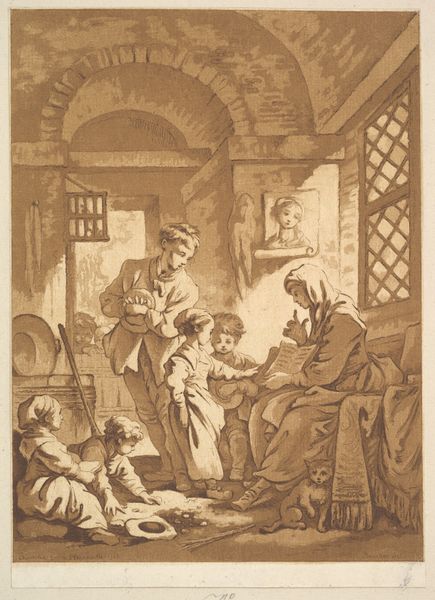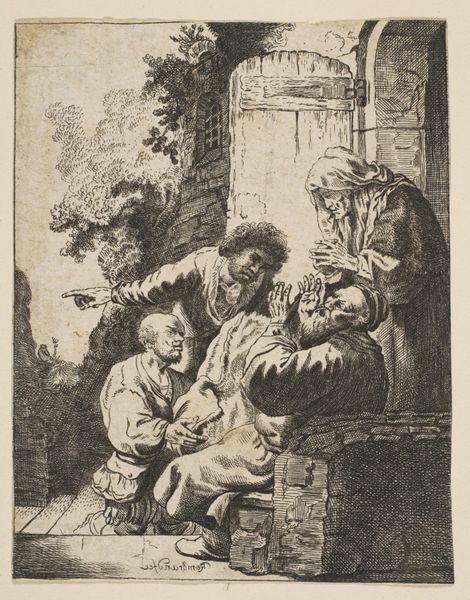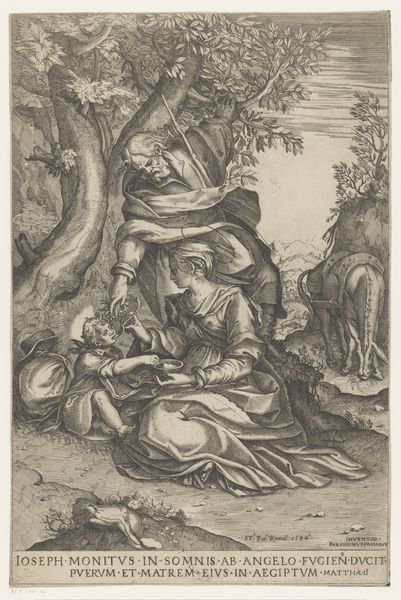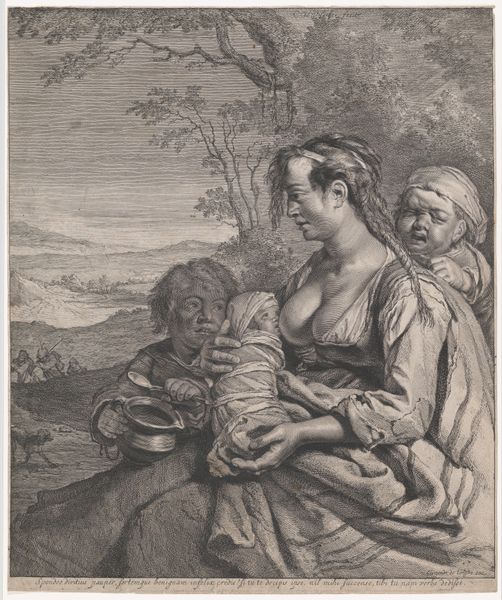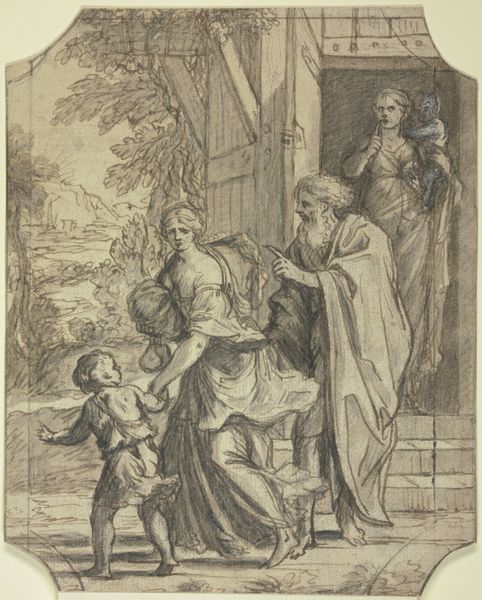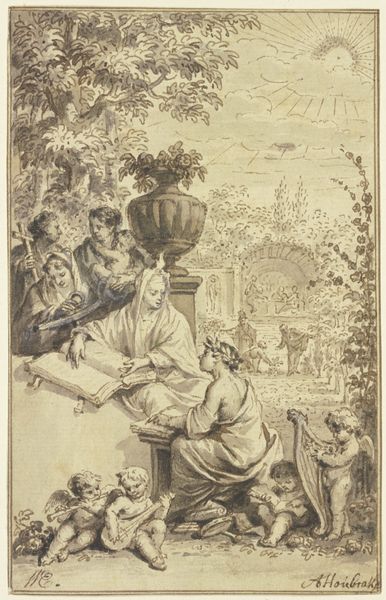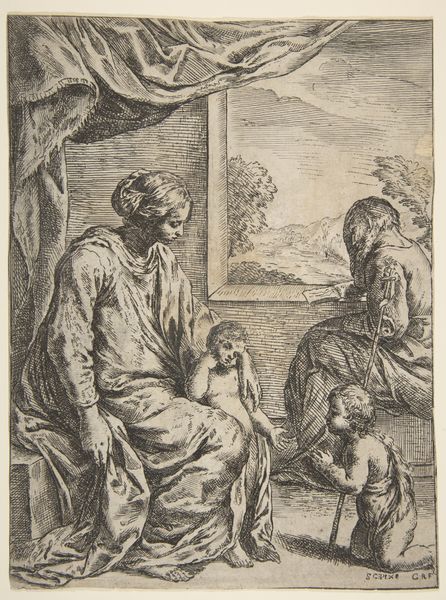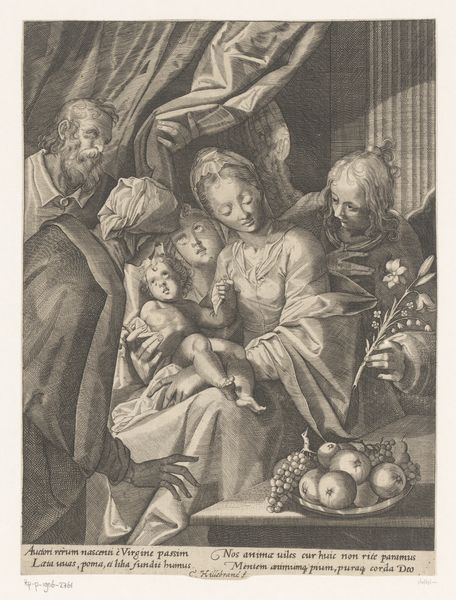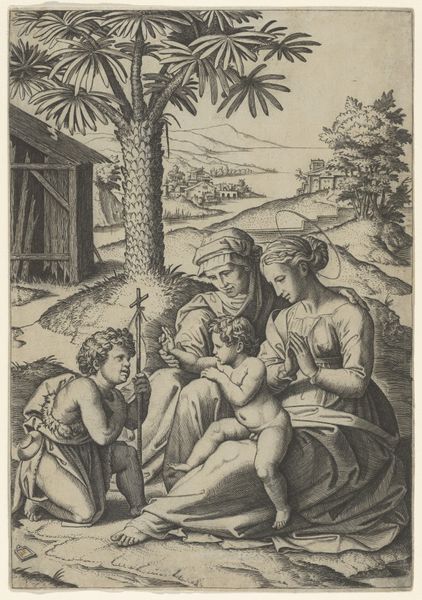
The Holy Family with the Infant John the Baptist 1593
0:00
0:00
drawing, print, engraving
#
drawing
# print
#
landscape
#
figuration
#
history-painting
#
northern-renaissance
#
engraving
Dimensions: Sheet: 18 7/16 × 13 7/8 in. (46.8 × 35.2 cm)
Copyright: Public Domain
Curator: Here we have Hendrick Goltzius's engraving, "The Holy Family with the Infant John the Baptist," created in 1593. It resides at the Metropolitan Museum of Art. The fineness of detail just leaps out at you! Editor: Yes, my first impression is the incredible detail rendered across the scene. But that's partly what makes it feel… staged. Almost theatrical. There's a stillness despite all the busyness. Curator: Right, engraving demanded an almost superhuman level of craftsmanship, translating flesh, fabric, even foliage into these incredibly precise lines etched into metal. Consider how such intense labour went into an image intended for relatively wide distribution. Were prints regarded as secondary, because mechanically produced, to 'original' painting? This piece pushes us to consider that relationship. Editor: I'm more intrigued by the context. Why choose to depict the Holy Family in what appears to be such an everyday setting, almost pastoral, complete with a domestic cat at the window? This reflects the prevailing artistic trend of humanizing biblical narratives. The image circulated among homes, influencing personal devotions and perceptions of holiness. Curator: I’m particularly struck by the material choices influencing visual texture. The varied application of engraving techniques - the density of lines in Joseph's cloak versus the light, almost flickering effect on the leaves - it directs the eye in a very calculated way. The consumer of this print gets very different experience, both in tactile quality and perceived value, than from a less intricate image. Editor: Precisely. The act of acquiring such an engraving became intertwined with social status and displayed refinement, and what religious narrative it displays. And consider how the mass production of these images shaped the church's approach to disseminating ideology. Curator: That is fascinating to me; how an artwork can transcend its intended purpose. While designed to impart spiritual messaging to viewers, the sheer labour put into creating such an incredible piece creates something almost separate to any prescribed intention from patrons. Editor: Yes. What appears a mere devotional scene embodies a much larger historical story – about artistry, society, and, above all, visual storytelling. Curator: Indeed. Each line in this engraving becomes a testament to material practice, and therefore both devotional artwork, and production. Editor: It encourages one to reflect on the evolving dynamics between art, belief, and socio-cultural influence.
Comments
No comments
Be the first to comment and join the conversation on the ultimate creative platform.
